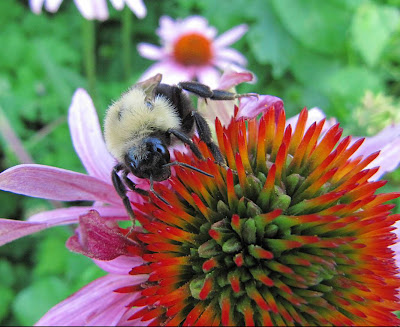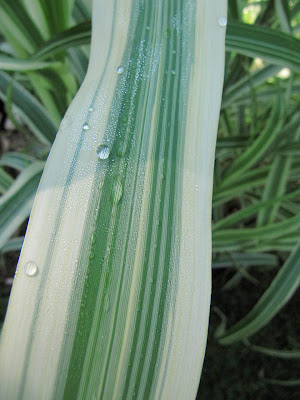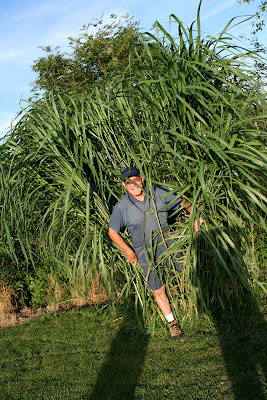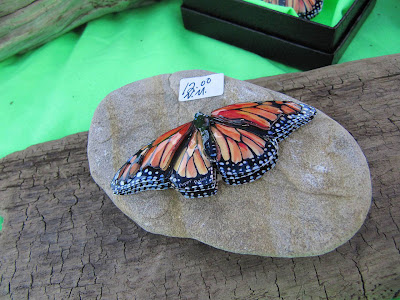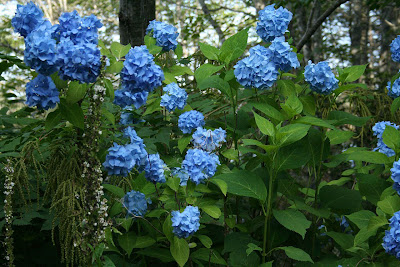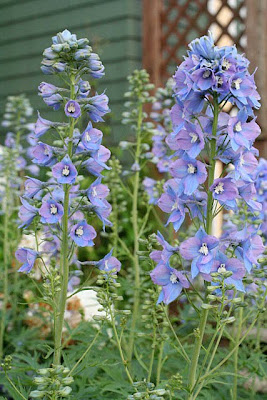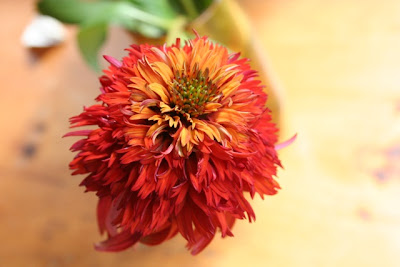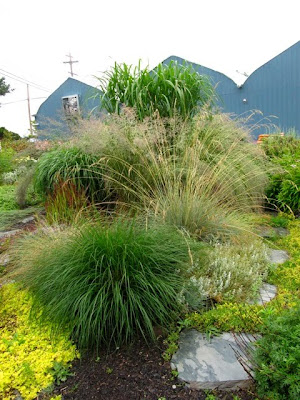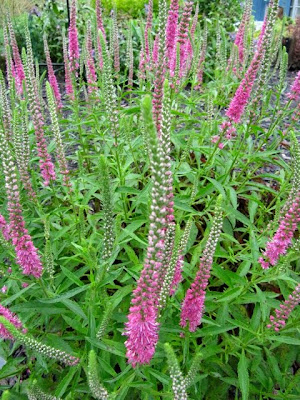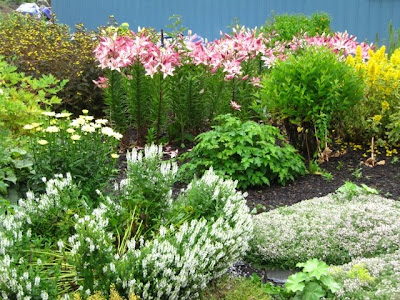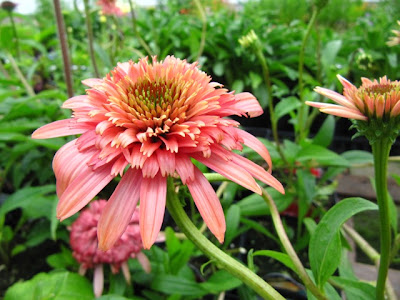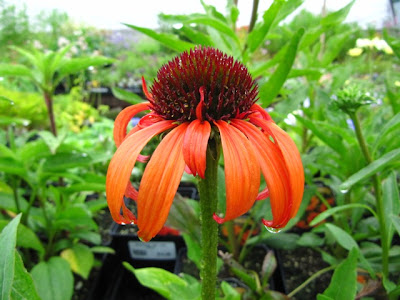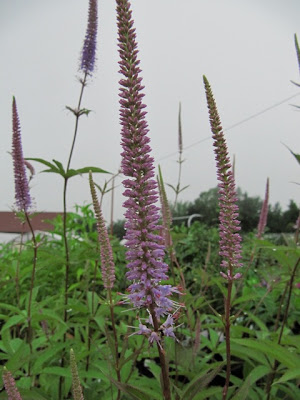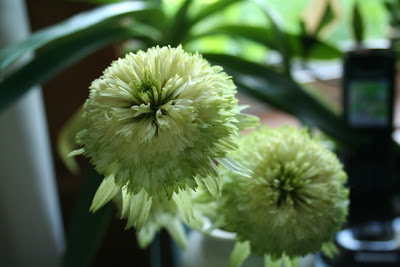
It is no secret that those of us who love plants understand one another quite well. While those who LIKE plants might think we're a bit much when we get excited over a perfect wildflower or a new plant catalogue, those of us who are total plant addicts understand perfectly why someone else would geek out over a new echinacea or a different heuchera or a heritage variety of leaf lettuce or seventy different types of tomatoes. Maybe not everyone loves echinacea 'Green Envy' as much as I do, but we plant people all have plants that make us extraordinarily happy.

I find myself firmly straddling all worlds when it comes to garden plants AND wild plants. New cultivars of garden plants often make me rapturous with excitement and plant envy. Old favourites make me joyful, even those that exasperate me because I can't get them to grow properly for me (yellow hollyhocks, anyone?)
I don't need to bring home every plant I see, however. My practical gene kicks in from time to time, and while I love Rudbeckia 'Prairie Sun' (photo, above), I know it will behave more likely than not as an annual and not return. So I'll enjoy it in other gardens or at nurseries, or in photos, and that's just fine.
 Sometimes we're too busy or too preoccupied or we're looking up in trees or out at the water and we don't always notice the wonders going on under our feet. Or we don't recognize what we're looking at. I wonder how many people have walked by Indian Pipe (Monotropa species) and not noticed their ghostly heads rising up out of the ground. Probably plenty of us, while others, like me, carefully bend over and put our cameras down close so we can catch a little of the magic of a chlorophyll-less plant. I never get tired of seeing these mysterious, bizarre plants.
Sometimes we're too busy or too preoccupied or we're looking up in trees or out at the water and we don't always notice the wonders going on under our feet. Or we don't recognize what we're looking at. I wonder how many people have walked by Indian Pipe (Monotropa species) and not noticed their ghostly heads rising up out of the ground. Probably plenty of us, while others, like me, carefully bend over and put our cameras down close so we can catch a little of the magic of a chlorophyll-less plant. I never get tired of seeing these mysterious, bizarre plants.
 Then there's the sheer, almost unutterable joy of seeing a rare, endangered, and exquisitely beautiful plant growing, even thriving, in its natural habitat. You won't see Sabatia kennedyana in my garden, or in any garden centre. In fact, most of you will never see this remarkable little wildflower, ever. But my fellow plant addicts understand perfectly, even without seeing it, why I was so excited--and even a little bit teary--to see my very first Plymouth gentian with my own eyes. Not just in photos. Not just in the poster of coastal plains flora that is on my office wall. But actually living and breathing in front of me. I couldn't get a photo exactly in front of it because I didn't want to get any closer, lose my balance, and fall over in the water, or get too close to the flower. So I worshiped from a respectable distance, and trusted my camera to do its best to catch it for me.
Then there's the sheer, almost unutterable joy of seeing a rare, endangered, and exquisitely beautiful plant growing, even thriving, in its natural habitat. You won't see Sabatia kennedyana in my garden, or in any garden centre. In fact, most of you will never see this remarkable little wildflower, ever. But my fellow plant addicts understand perfectly, even without seeing it, why I was so excited--and even a little bit teary--to see my very first Plymouth gentian with my own eyes. Not just in photos. Not just in the poster of coastal plains flora that is on my office wall. But actually living and breathing in front of me. I couldn't get a photo exactly in front of it because I didn't want to get any closer, lose my balance, and fall over in the water, or get too close to the flower. So I worshiped from a respectable distance, and trusted my camera to do its best to catch it for me.
 Sometimes we're too busy or too preoccupied or we're looking up in trees or out at the water and we don't always notice the wonders going on under our feet. Or we don't recognize what we're looking at. I wonder how many people have walked by Indian Pipe (Monotropa species) and not noticed their ghostly heads rising up out of the ground. Probably plenty of us, while others, like me, carefully bend over and put our cameras down close so we can catch a little of the magic of a chlorophyll-less plant. I never get tired of seeing these mysterious, bizarre plants.
Sometimes we're too busy or too preoccupied or we're looking up in trees or out at the water and we don't always notice the wonders going on under our feet. Or we don't recognize what we're looking at. I wonder how many people have walked by Indian Pipe (Monotropa species) and not noticed their ghostly heads rising up out of the ground. Probably plenty of us, while others, like me, carefully bend over and put our cameras down close so we can catch a little of the magic of a chlorophyll-less plant. I never get tired of seeing these mysterious, bizarre plants. Then there's the sheer, almost unutterable joy of seeing a rare, endangered, and exquisitely beautiful plant growing, even thriving, in its natural habitat. You won't see Sabatia kennedyana in my garden, or in any garden centre. In fact, most of you will never see this remarkable little wildflower, ever. But my fellow plant addicts understand perfectly, even without seeing it, why I was so excited--and even a little bit teary--to see my very first Plymouth gentian with my own eyes. Not just in photos. Not just in the poster of coastal plains flora that is on my office wall. But actually living and breathing in front of me. I couldn't get a photo exactly in front of it because I didn't want to get any closer, lose my balance, and fall over in the water, or get too close to the flower. So I worshiped from a respectable distance, and trusted my camera to do its best to catch it for me.
Then there's the sheer, almost unutterable joy of seeing a rare, endangered, and exquisitely beautiful plant growing, even thriving, in its natural habitat. You won't see Sabatia kennedyana in my garden, or in any garden centre. In fact, most of you will never see this remarkable little wildflower, ever. But my fellow plant addicts understand perfectly, even without seeing it, why I was so excited--and even a little bit teary--to see my very first Plymouth gentian with my own eyes. Not just in photos. Not just in the poster of coastal plains flora that is on my office wall. But actually living and breathing in front of me. I couldn't get a photo exactly in front of it because I didn't want to get any closer, lose my balance, and fall over in the water, or get too close to the flower. So I worshiped from a respectable distance, and trusted my camera to do its best to catch it for me. Maybe if everyone shared that sort of joy that I feel in seeing a single rare flower, our world wouldn't be in the mess it's in. Seeing a plant like this rare beauty gives me hope. It really does.

